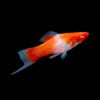To provide the best experiences, we use technologies like cookies to store and/or access device information. Consenting to these technologies will allow us to process data such as browsing behaviour or unique IDs on this site. Not consenting or withdrawing consent, may adversely affect certain features and functions.
The technical storage or access is strictly necessary for the legitimate purpose of enabling the use of a specific service explicitly requested by the subscriber or user, or for the sole purpose of carrying out the transmission of a communication over an electronic communications network.
The technical storage or access is necessary for the legitimate purpose of storing preferences that are not requested by the subscriber or user.
The technical storage or access that is used exclusively for statistical purposes.
The technical storage or access that is used exclusively for anonymous statistical purposes. Without a subpoena, voluntary compliance on the part of your Internet Service Provider, or additional records from a third party, information stored or retrieved for this purpose alone cannot usually be used to identify you.
The technical storage or access is required to create user profiles to send advertising, or to track the user on a website or across several websites for similar marketing purposes.














Emily Roberts (verified owner) –
I recently purchased the 10 assorted Swordtails, and I couldn’t be happier with my decision! These vibrant tropical fish bring so much life and color to my aquarium. Each one has its own unique pattern, which is such a delight to watch as they swim around. After about two weeks, they’ve settled in beautifully and are already showing off those stunning tails!
I love that they’re livebearers, making them fascinating to observe, especially during their little interactions. They’ve been friendly with my other fish, too, which is always a concern when introducing new species. One minor point is that they can be a bit shy at first, so providing plenty of hiding spots in the tank is essential.
Compared to other fish I’ve had in the past, these Swordtails are such an excellent value and perform remarkably well. If you’re looking for an engaging and colorful addition to your tank, I highly recommend these swordtail fish. They’re perfect for both beginners and experienced hobbyists. Just make sure to keep the water parameters stable, and you’ll have happy, healthy fish! I will definitely be buying more soon!
Emily Carter (verified owner) –
I recently purchased the 10 assorted swordtails, and I couldn’t be more thrilled! As a caring fish parent, the health and happiness of my aquatic friends are my top priority. These swordtails arrived within two days, and I was impressed at how lively and vibrant they were right out of the box. After acclimating them to my 30-gallon community tank, I noticed they quickly adapted to their new environment, happily swimming around and interacting with my other fish.
Over the past month, they’ve displayed a beautiful array of colors, adding such a joyful atmosphere to my aquarium. I particularly love how they are peaceful, making them perfect companions for my tetras and guppies. Compared to other livebearers I’ve tried, these swordtails are much more active and social, which makes for a delightful viewing experience.
Just a note: I did experience a minor issue with one fish having slight fin fraying, but after a week of ensuring they had quality fish food and a stable environment, it improved significantly. Overall, I highly recommend these swordtails for anyone looking to brighten up their community tank with stunning tropical fish. They truly bring life to any aquatic environment!